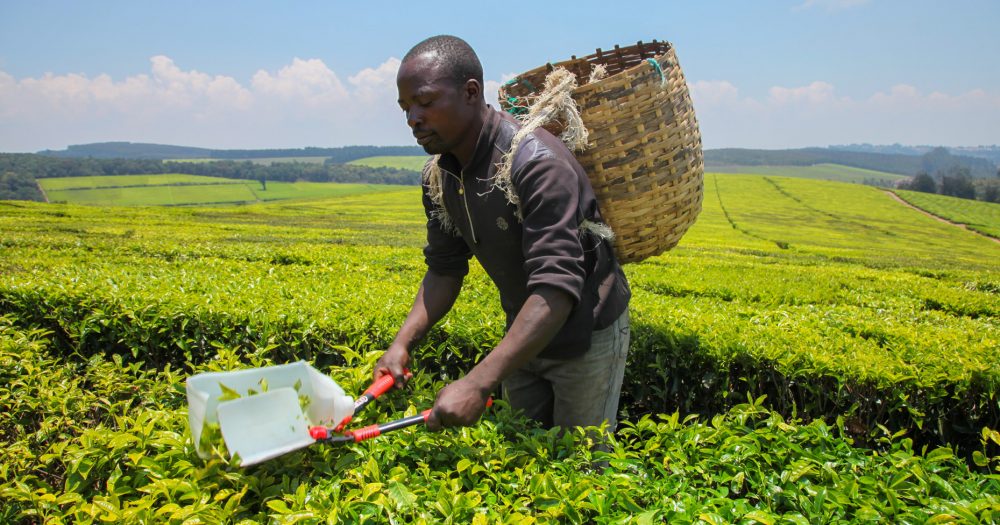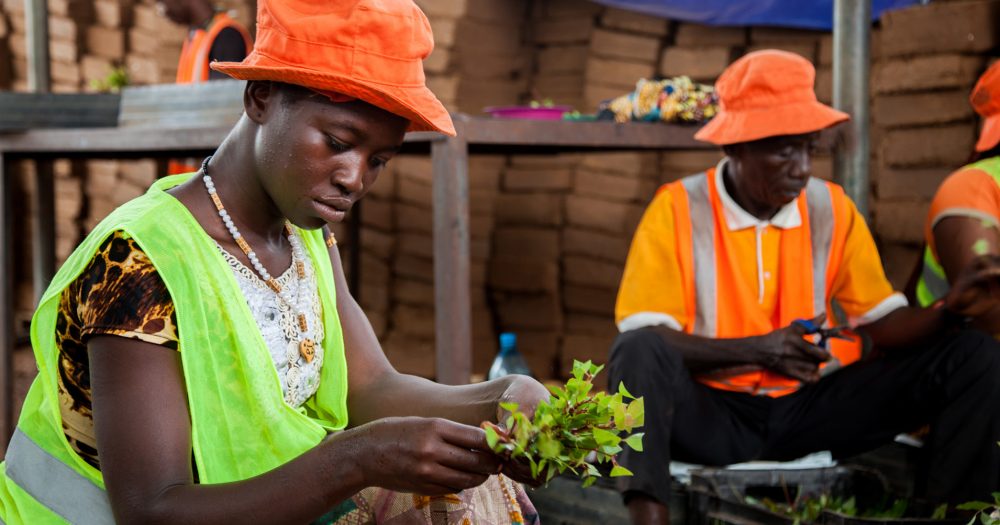Our investment
Description of the investment.
Description of the investment.
We invested in Kashf to support the Foundation in providing specialised microcredit products and capacity building services to micro-entrepreneurs, with a focus on women-owned or affiliated businesses.
Impact information
Applies to investments made from 2019 onwards. The tabs in this section define what we expect to achieve through the investment, assessing the potential impact of the investment against six dimensions of impact. You can find more details on our methodology of assessing impact here.
Applies to investments made from 2019 onwards. The tabs in this section define what we expect to achieve through the investment, assessing the potential impact of the investment against six dimensions of impact. You can find more details on our methodology of assessing impact here.
What?
| Impact |
|---|
|
|
|
How?
| How? |
|---|
|
Direct: Our provision of a senior debt facility to Kashf enabled the microfinance institution to maintain and extend greater credit – in the form of individual loans – to its customers, namely entrepreneurs of micro-businesses, allowing them to better manage cashflow, and grow their businesses. Over 75% of Kashf's lending activity constitutes loans to micro enterprises. |
Who?
| Stakeholder | Geography | Characteristics |
|---|---|---|
| Employees, individuals, households |
Pakistan (category ‘B’ country). Present in 40 per cent of Pakistan’s districts (37 per cent rural, 29 per cent semi-urban, and 34 per cent urban). |
Women (100 per cent of portfolio are female and of this, 63 per cent are female-led businesses); low-income (82 per cent of portfolio lives at or below the poverty line of $2/day and average loan size is $260). |
How much?
| Scale | Depth/Duration |
|---|---|
|
As of June 2024, Kashf had PKR 48bn (c. USD 170m) in assets and over 775,000 clients, capturing c. 15% of the market for microloans to women in Pakistan. |
|
Contribution/additionality
| Contribution/additionality |
|---|
|
Risk
External RiskRelates to the risk that client protection considerations are heightened in the COVID-19 context as end borrowers are low-income/vulnerable populations. We take comfort in Kashf being SMART-certified and offering COVID-19 specific protections to their clients such as tailored rescheduling based on client need , tailored financial products such as emergency and/or top-up loans to help clients financially navigate the crisis, and implementing business continuity trainings for clients to rebuild businesses. Evidence RiskRelates to the risk of challenges in measuring our impact through this facility. We take comfort in Kashf’s strong research and monitoring team. Mitigant: We will be receiving a semi-annual monitoring template on key impact indicators for this transaction. Execution RiskRelates to the currency risk related to hedging of a US dollar facility i.e. hedging costs may be prohibitive and be transferred to microfinance institution borrowers. This risk is low as almost half of Kashf’s existing borrowings are in foreign currency and hedged to local currency and has not translated to significantly higher costs for borrowers to date. Interest rates have stayed consistent in the last two years despite a reduction in margins, indicating Kashf’s efforts at minimizing transfer of costs to their borrowers. |
Impact score
|
Impact score (at point of investment)
The Impact Score is a tool to help us manage our performance against our strategic impact objectives. It is designed to incentivise investments that support our productive, sustainable, and inclusive objectives. You can find out more here. The Impact Score is published for investments made from 2022 onwards. The Impact Scores are calculated at the point of investment. We publish the Impact Scores of new investments annually, once the information has been externally assured by an independent third party. |
|---|
8 |
Environmental and social information
-
Environmental and social summary
A high-level description of the environmental and social aspects of the investment. This may include a summary of key environmental and social risks identified during environmental and social due diligence (ESDD); key elements of an environmental and social action plan (ESAP); or ways in which we plan to support the investee improve environmental and social standards, such as through their environmental and social management system (ESMS); as well as any other priority areas agreed with the investee.
-
Environmental and social risk
A risk category rating, which indicates the level of environmental and social risk associated with an investment. For an explanation of the categorisations used, see here. We consistently provide an environmental and social risk category for all investments screened from 2023 onwards.
Environmental and social summary
We agreed on an ESAP which required the development of a travel safety policy and implementation of emergency response policies within the branch offices.
Environmental and social risk
Medium-Low
Reporting and Complaints Mechanism
The Reporting and Complaints Mechanism allows anyone outside BII to report alleged breaches of the business integrity or environmental and social provisions of BII’s Policy on Responsible Investing. This includes breaches made by BII, a BII investee, or a portfolio company of a fund in which BII has invested. The Reporting and Complaints Mechanism Rules are available here. Reports and complaints can be submitted by email to reportsandcomplaints@bii.co.uk or by mail. See more details on our Reporting and Complaints Mechanism here.
For any other general enquiries contact us at enquiries@bii.co.uk
-
Key facts
- First published
:
When the investment was first published on the website database.
- March 2024
- Last updated
:
When the last quarterly update of the website database occurred.
- March 2025
- Project number
:
An identifier number shared by investments in the same project.
- D2094
- Status
:
The current status of the investment (green flag for active and red flag for exited).
- Active
- Region
:
The geographical region where the country is located. We currently invest in Africa, South Asia, South East Asia and the Caribbean. In 2023, BII’s investment mandate was extended allowing it to invest in regional funds linked to Ukraine, with the majority of activity expected to begin post-war. Investments outside these regions were made prior to 2012 under previous investment mandates.
- South Asia
- Country
:
The countries where the investment delivers impact. Where impact is delivered in multiple countries, this is indicated.
- Pakistan
- Sector
:
We prioritise those sectors that facilitate development and need our capital the most. Our priority sectors contribute towards many of the Sustainable Development Goals. They range from investing in the power infrastructure that will provide people with better access to electricity, to investing in financial institutions that direct capital to the individuals and businesses that need it the most.
- Financial services
- Sub sector
:
The sub-sector that the investment is made into; this provides a more granular level of detail than the ‘sector’ information
- Specialized Finance
- Investment type :
- Debt
- Start date :
- December 2023
- Amount :
- $15m
- Currency of investment :
- USD
- Domicile
:
The company or investment fund’s place of incorporation.
- Pakistan
We provide capital in the following ways: directly – through direct equity, direct debt, guarantees and other non-intermediated financial instruments; and indirectly – principally through investment funds.
For direct investments and fund investments, this is the date BII committed capital to the investments. This is typically the date on which legal agreements are signed by all parties.
For the portfolio companies of our fund investments, this is the date (either the month or the quarter) on which the fund committed capital to the portfolio company.
For direct equity investments, this is the date at which British International Investment exited the investment.
For debt investments, this is the date at which the final debt repayment was made.
For funds, this is the date at which the fund was terminated.
For underlying fund investments, this is the date at which the fund manager exited the investment.
The total amount committed, per financial instrument, per investment, on the date BII becomes subject to a binding legal obligation to provide funding or assume a contingent liability. This information is provided in US dollars.
For direct investments, this is the amount that BII has committed to the business or project. For fund investments, this is the amount BII has committed to the fund.
The currency in which the investment was made.
- 2X Gender Finance
:
Indicates whether the investment is ‘2X qualified’ using the 2X Challenge criteria. You can find out more here. It only applies to investments made from 2018 onwards, when the 2X Challenge was first launched.
- Fully qualified
- First published
Related investments made by BII into this company:
| Investment name | Commitment | Region | Sector | Start date | Status |
|---|---|---|---|---|---|
| Investment 01 | $15m | South Asia | Financial services | December 2020 | Exited |


